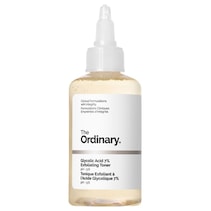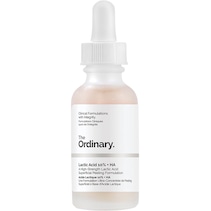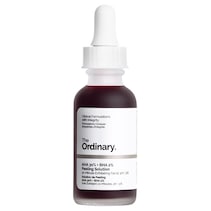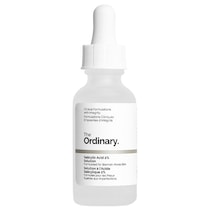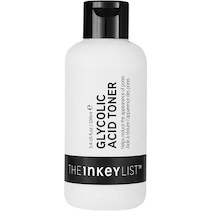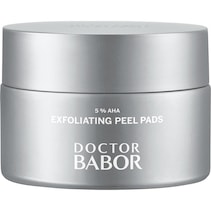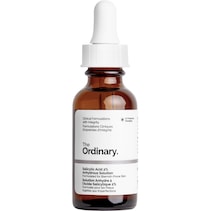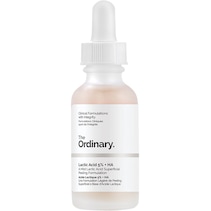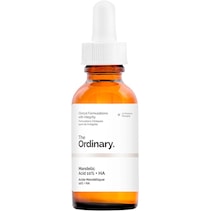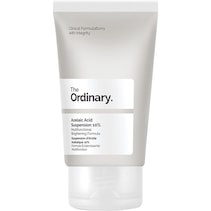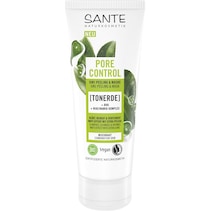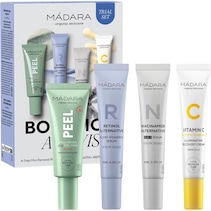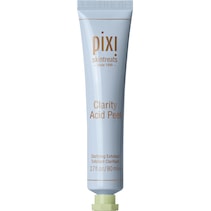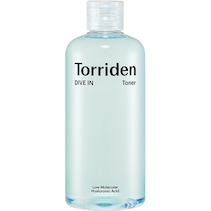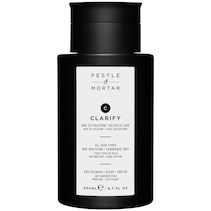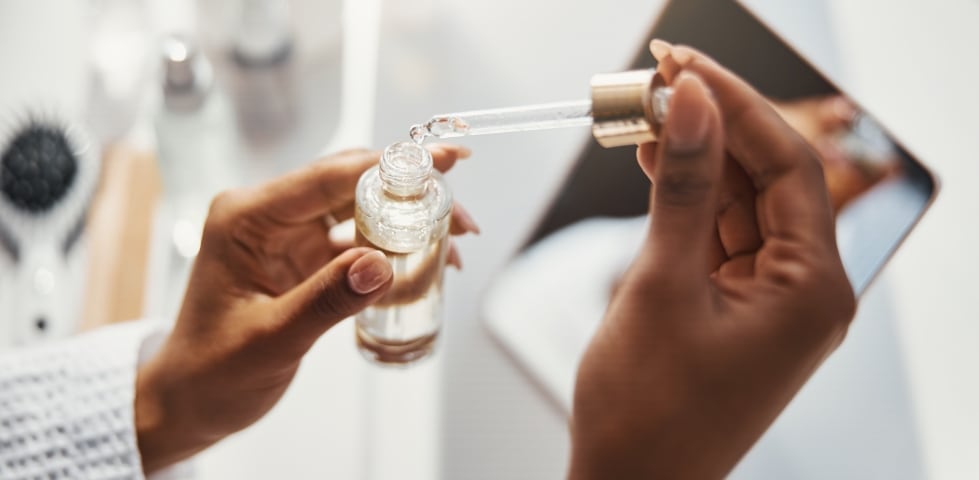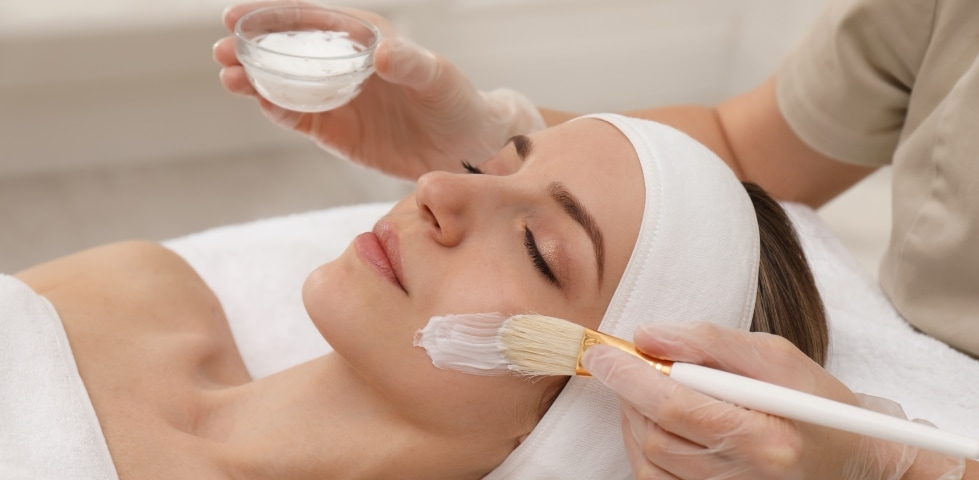
Chemical face peels – what do they do?
Chemical face peel – to many people, that might sound odd at first. What exactly is it, and how is this method used in cosmetics? Does it have advantages over a mechanical peel, and does it come with any risks? We answer all of these questions in the following blog post. Read on for a brief overview of what a chemical face peel is and how you can best use this method to improve your complexion.
10 January 2023 • 5 min. reading time
Table of contents
Chemical peeling
Chemical peeling
What is chemical peeling?
A chemical face peel is a method of chemically removing dead skin cells. In contrast to a mechanical face peel, which involves rubbing off dead skin cells using minute particles, the effect of a chemical skin peel goes deeper than the surface of the skin alone. It penetrates deep into the cell layers, meaning it can stimulate the metabolism and promote collagen production in the middle skin layers. As it does not cause any mechanical stress on the surface of the skin, it feels gentler than a mechanical face peel.
What types of chemical face peel are there?
Chemical face peels are generally divided into three categories:
- Light chemical face peels, usually with alphahydroxy acid (AHA)
- Medium chemical face peels with trichloroacetic acid (TCA)
- Deep-acting chemical face peels with phenol
For light chemical face peels intended for use at home, a concentration of max. 20% glycolic acid is standard. If dermatologists use this type of face peel in a controlled setting, they often use formulas with up to 30% glycolic acid. However, these procedures are not considered to be a medical treatment and therefore do not require medical supervision. As such, a chemical face peel can be performed at home in order to improve the complexion and stimulate collagen production. It is also possible to use them to reduce pigment spots or dark spots caused by pimples.
Chemical face peels with trichloroacetic acid can only be performed by medical professionals. This type of treatment is used to reduce scars and wrinkles as well as remove pigment spots. A deep-acting chemical face peel with phenol stimulates the regeneration of elastin and collagen fibres in the skin. This type of treatment likewise requires medical supervision.
How and how often should chemical face peels be used?
How often you should use a chemical face peel depends on the properties of your skin as well as the current state of your skin and the formula of the peel. Always observe the instructions for use on the product. If you have healthy skin and a normal complexion, you can use a chemical face peel approximately once per week. If your skin tends to suffer from impurities and acne, you can increase the frequency to a maximum of twice a week. If you have dry or sensitive skin, you should use a chemical face peel once a month at most. If the chemical face peel feels uncomfortable or you experience redness, you should stop using the treatment for a while or increase the intervals between treatments.
You should also bear in mind that a chemical face peel can increase your skin's sensitivity to light. In summer, it is best to avoid a chemical face peel and instead opt for other ways of improving your complexion. You should also use UV protection during the day. Good choices for everyday use include day creams with SPF.
Chemical face peel – how to use
The areas of application for a chemical face peel depend on the intensity of the treatment. For instance, a light chemical face peel removes the uppermost layers of skin and boosts their regeneration. The stronger the peel and the deeper it penetrates into the skin layers, the stronger the effects can be. A treatment with a chemical face peel can serve the following purposes:
- correction of facial scars – this works well when the scars are not too thick
- Firming and smoothing the uppermost layers of skin in conjunction with the stimulation of collagen formation
- A general improvement in the complexion
- Removal of wrinkles, hyperpigmentation, dark spots left by pimples or pigment spots
A chemical face peel can feel slightly unusual when used for the first time. The skin may react by turning red and may feel irritated immediately after the treatment. In this case, it needs nourishing care to hydrate and soothe it and reduce any redness.
In what forms are chemical face peels available?
Would you like to use a chemical face peel at home to improve your complexion? Then you should opt for products with a low concentration of active peeling ingredients. These can also be used by people without medical experience. Light chemical peels are available with the following active ingredients:
- AHA (alphahydroxy acid)
- BHA (betahydroxy acid), also known as salicylic acid
- PHA (polyhydroxy acid)
AHAs remove the uppermost layer of skin, make the complexion more even and can reduce wrinkles. Examples of AHAs are glycolic acid, lactic acid and mandelic acid. Glycolic acid is the most common for a chemical skin peel, is well tolerated and hydrates the skin during the treatment. Lactic acid and mandelic acid are slower acting than glycolic acid but cause less irritation. They are well suited as chemical face peels for sensitive skin.
BHA or salicylic acid is more intense than AHA. As such, it stimulates the skin to regenerate faster. Salicylic acid can also stop inflammation and clear clogged pores. A BHA face peel is, therefore, well suited for impure and acne-prone skin.
PHA is very similar to AHA but is much slower acting and does not irritate the skin as much as AHA. Even so, a PHA peel can still reduce wrinkles and pigment spots and promote an even complexion. A PHA face peel is also suitable for sensitive skin and skin that is prone to redness.
What advantages can a chemical face peel offer?
A chemical face peel promotes natural regeneration and improves the complexion from the inside out. The treatment removes the uppermost layers of skin without mechanical stress. By using a low concentration of active peeling ingredients as well as the addition of nourishing and soothing components, the treatment can be very gentle. Meanwhile, the formation of collagen is stimulated in the deeper cell layers – this has long-term benefits for the elasticity and firmness of the skin. A chemical face peel can also visibly reduce wrinkles and hyperpigmentation as well as remove pigment spots.
Effects of a chemical face peel, before and after:
- The skin is more even
- Wrinkles and fine lines are reduced
- Pigment spots and pimple marks are faded
- Scars appear less pronounced
- The skin appears firmer and more elastic
When should you not use a chemical face peel?
There are some situations where it is not advised to treat your skin with a chemical face peel. For instance, if you suffer from rosacea, a chemical face peel can cause it to get worse. It is also advised that this type of cosmetic treatment is not used during pregnancy because the skin is often already undergoing extreme changes over this time. People with impaired immune function should also be on the safe side and avoid chemical face peels. If you are unsure if your skin will tolerate a chemical face peel, you should seek medical advice before use.
Takeaway
With a fruit acid peel or a chemical peel, you can visibly improve your complexion after just a few uses. Mild products that gently remove the uppermost layers of skin are enough in many cases, stimulating your skin to regenerate more efficiently. Refined pores and an even complexion will give your face its youthful glow back. You can also use it to reduce fine lines or wrinkles – so you should also integrate a chemical face peel into your anti-ageing routine if necessary. To ensure safe application, you should use dermatologically tested products with tried-and-tested formulas that are also suitable for sensitive skin. Discover chemical face peels and high-quality skincare products at parfumdreams now!


